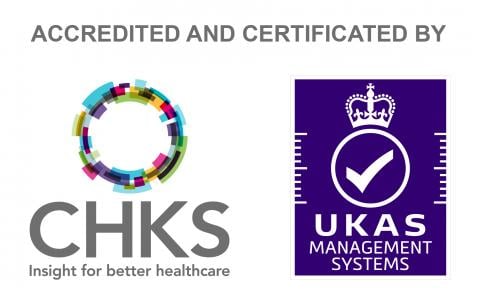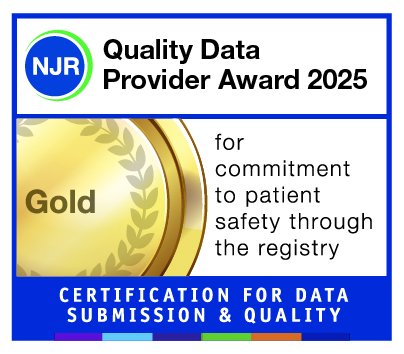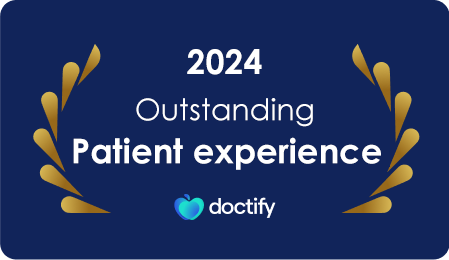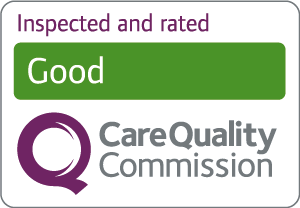
As part of our Women's Health campaign this May – coinciding with Osteoporosis Awareness and Prevention Month – we turned to an expert for clarity on osteoporosis. This widespread yet frequently misunderstood condition impacts millions worldwide, with women being the most affected. Dr Israa Al-Shakarchi, our esteemed Consultant Rheumatologist, provides essential insights into the origins, risk factors, symptoms, and effective management strategies for osteoporosis.
What is osteoporosis?
Your bones are a living tissue, constantly undergoing a cycle of being broken down and replaced. Osteoporosis occurs when the creation of new bone does not keep pace with the loss of old bone, and as a result, bones become less dense, more fragile, and prone to breaks (fractures).
This does not happen overnight, but occurs over a period of years, typically without symptoms, until a minor fall results in a fracture. A fifth of women who fracture a bone will have three or more fractures before being diagnosed. This is why osteoporosis is sometimes called 'the silent thief' – you do not feel your bones getting thinner, and you may have no symptoms until you fracture. Fractures most commonly occur in the wrists, hips and spine, but can occur almost anywhere.
Who is affected by osteoporosis?
Osteoporosis predominantly affects women, with nearly three million cases in the UK, constituting 78% of all osteoporosis patients. The menopause marks a pivotal moment for a woman’s bone health. Osteoporosis risk increases significantly post menopause, due to the drop in oestrogen levels, which accelerates bone loss. This risk is even more pronounced if menopause occurs early (before the age of 45), or due to the surgical removal of the ovaries.
Men can also develop osteoporosis, especially if they have low testosterone levels, although often the cause is unknown.
While age is a critical factor for all genders, and one in five men will sustain at least one osteoporotic fractures in their lifetime, the prevalence of osteoporosis is higher in women and rises from 2% among 50 year-olds, to almost 50% by the age of 80.
What causes osteoporosis and am I at risk?
While loss of bone mineral density is a natural part of ageing for either sexes, some individuals, especially women, lose bone density much faster, leading to osteoporosis.
As well as age, other factors that can increase the risk of developing osteoporosis include:
- Post-menopause, particularly if there is a history of early menopause.
- Removed ovaries.
- A family history of osteoporosis, particularly a hip fracture in a parent.
- Other medical conditions such as inflammatory conditions (e.g. inflammatory arthritis or inflammatory bowel disease), hormone-related conditions (e.g. an over-active thyroid or over-active parathyroid, Type 1 diabetes, Cushing’s syndrome, reduced sex hormones), malabsorption problems (e.g. Coeliac disease), organ disease (e.g. chronic kidney disease or liver disease).
- Long-term use of certain medicines that can affect bone strength or hormone levels (e.g. high-dose steroid tablets like Prednisolone for more than three months, some hormone treatments for breast and prostate cancer, some treatment for epilepsy, some treatments for reflux disease).
- Current or past eating disorder (e.g. anorexia or bulimia).
- A low body mass index (BMI) of 18.5 or less (i.e. you are very underweight).
- Poor nutrition, with a diet low in vitamin D and calcium.
- Having a small, thin build.
- Ethnicity – osteoporosis is more common in Caucasian and Asian ethnicities.
- Long periods of inactivity (e.g. bed rest), or lack of weight-bearing exercise.
- Alcohol intake of more than 3 units a day.
- Smoking.
What are the symptoms of osteoporosis?
Typically, there are no symptoms in the early stages of bone loss, but once bones have been weakened by osteoporosis, they may fracture. Fractures cause pain, rather than osteoporosis itself. However, in addition to fractures, some symptoms and signs can indicate the presence of osteoporosis, particularly in the spine, where back pain, loss of height over time, a stopped posture or curved spine may be caused by a fractured or collapsed vertebrae.
It is important to note that these symptoms often manifest only after osteoporosis has already caused significant bone loss. Therefore, screening is recommended, especially for those at higher risk.
What is osteopenia?
Osteopenia is a condition where bone density is lower than normal, but not low enough to be classified as osteoporosis; it can be thought of as pre-osteoporosis.
The good news is that osteopenia does not always lead to osteoporosis. Being diagnosed with osteopenia offers an opportunity to take preventative measures to keep bones healthy and lower your risk of developing osteoporosis. These may include drug treatments and lifestyle measures.
How are osteoporosis and osteopenia diagnosed?
Your GP or Rheumatologist will ask questions to establish your risk factors for osteoporosis and assess your risk of future fractures using an online risk calculating tool. You may also need to have a DEXA bone scan, which uses X-rays to assess bone density (bone strength).
What can I do to strengthen my bones and reduce the risk of fractures?
Working on lifestyle factors will influence how healthy your bones are, and will help prevent bone loss.
- Eat a balanced diet rich in calcium and Vitamin D:
We need 1000-1500mg of calcium / day. Foods rich in calcium include dairy products, leafy green vegetables, tofu, dried fruit, calcium-fortified cereals, orange juice, fish eaten with bones (e.g. sardines).
We need around 600-800 International Units (IU) or 15-20mcg of vitamin D / day. Dietary sources of vitamin D include oily fish, red meat, egg yolks, and salmon. Some types of milk and cereal are also fortified with vitamin D.
- Reduce alcohol intake to less than 14 units a week, and avoid binge drinking. Long-term alcohol consumption can interfere with bone growth and remodelling, resulting in decreased bone density (strength) and increased risk of fracture.
- Stop smoking: Smoking has several effects on bone. The nicotine in cigarettes slows the production of bone-forming cells (osteoblasts), so less bone is made. Smoking also decreases the absorption of calcium from the diet, which is needed to make bones strong.
- Exercise regularly:
Weight-bearing exercises (any activity that involves walking or running).
Muscle-strengthening exercises (cycling or swimming).
Resistance exercises (weight training).
Balance exercises (tai chi). - Reduce hazards and manage risks: Ensure walkways in your home are clear from clutter and obstacles, and optimise your eyesight and hearing to help you avoid danger.
Can you cure osteoporosis?
While osteoporosis cannot be cured, it can be treated.
Treatment for osteoporosis is based on preventing fractures and strengthening the bones. It can be split into drug treatments and lifestyle modifications. Whether you need drug treatment will depend on your individual risk of a future fracture, as having osteoporosis does not mean you will definitely fracture.
There are a number of different drugs used to treat osteoporosis (and sometimes osteopenia). These include:
- Bisphosphonates: Slow bone breakdown, maintaining bone density and reducing fracture risk.
- Selective oestrogen receptor modulators (SERMs): Help maintain bone density, particularly in the spine.
- Parathyroid hormone treatments: Stimulate new bone growth, increasing bone density.
- Biological medicines: Such as Denosumab and Romosozumab slow down bone breakdown and promote bone formation.
- Calcium and vitamin D: Are essential for maintaining bone health.
- Hormone replacement therapy (HRT): Helps keep bones strong and reduces osteoporosis risk.
The future of osteoporosis
Osteoporosis is a condition that commands our attention due to itssignificant impact on individuals’ health and quality of life, with chronic pain, reduced mobility, and even disability, not to mention the cost of long-term care. As life expectancy increases across globe, the number of osteoporosis patients is projected to increase at a dramatic pace. However, the future of osteoporosis care looks promising, with advancements in diagnostic tools, new pharmacological treatments and treatment strategies.
Other sources of information:
National Osteoporosis Guideline Group
NICE: Osteoporosis - prevention of fragility fractures
Royal Osteoporosis Society
By understanding osteoporosis, recognising the risk factors, and taking proactive steps, you can significantly improve your bone health and reduce the risk of fractures.
To book an appointment with our experienced Consultant Rheumatologists, please call us on 020 8949 9020 or complete our online form.












